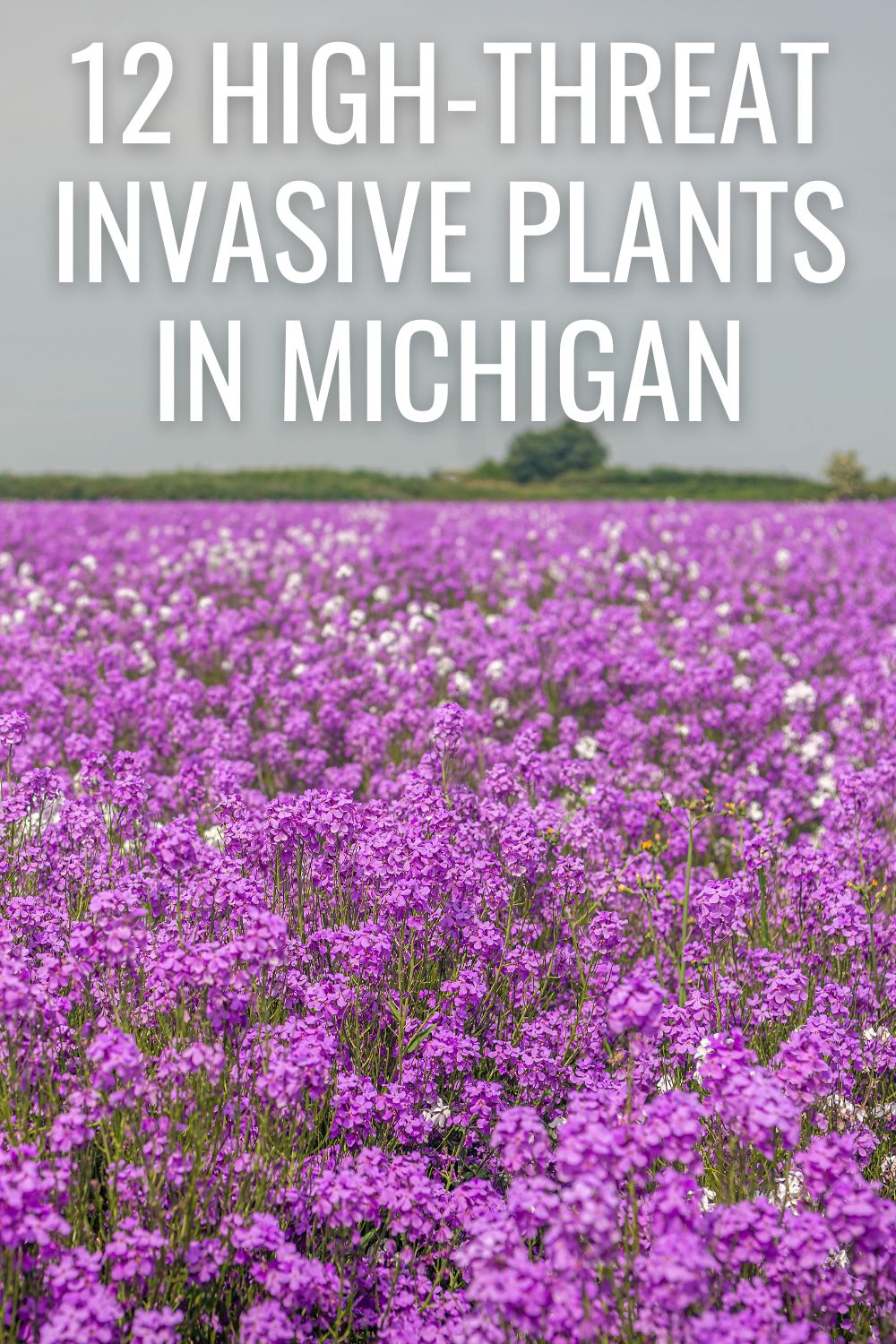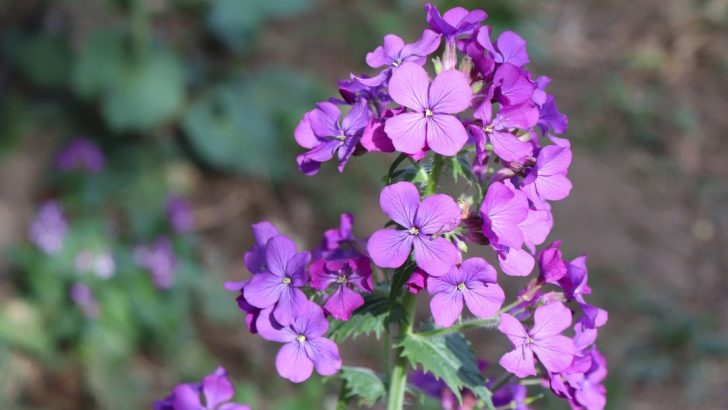Cleaning up invasive species might seem like a job better left to park rangers and other professionals, but about half of the worst invasive plants in Michigan began in gardens. These nonnative ornamentals spread beyond our manicured landscapes to take over natural spaces, crowding out native plants and disrupting ecosystems. But how do you distinguish between the well-mannered garden plants and the “bad guys”?
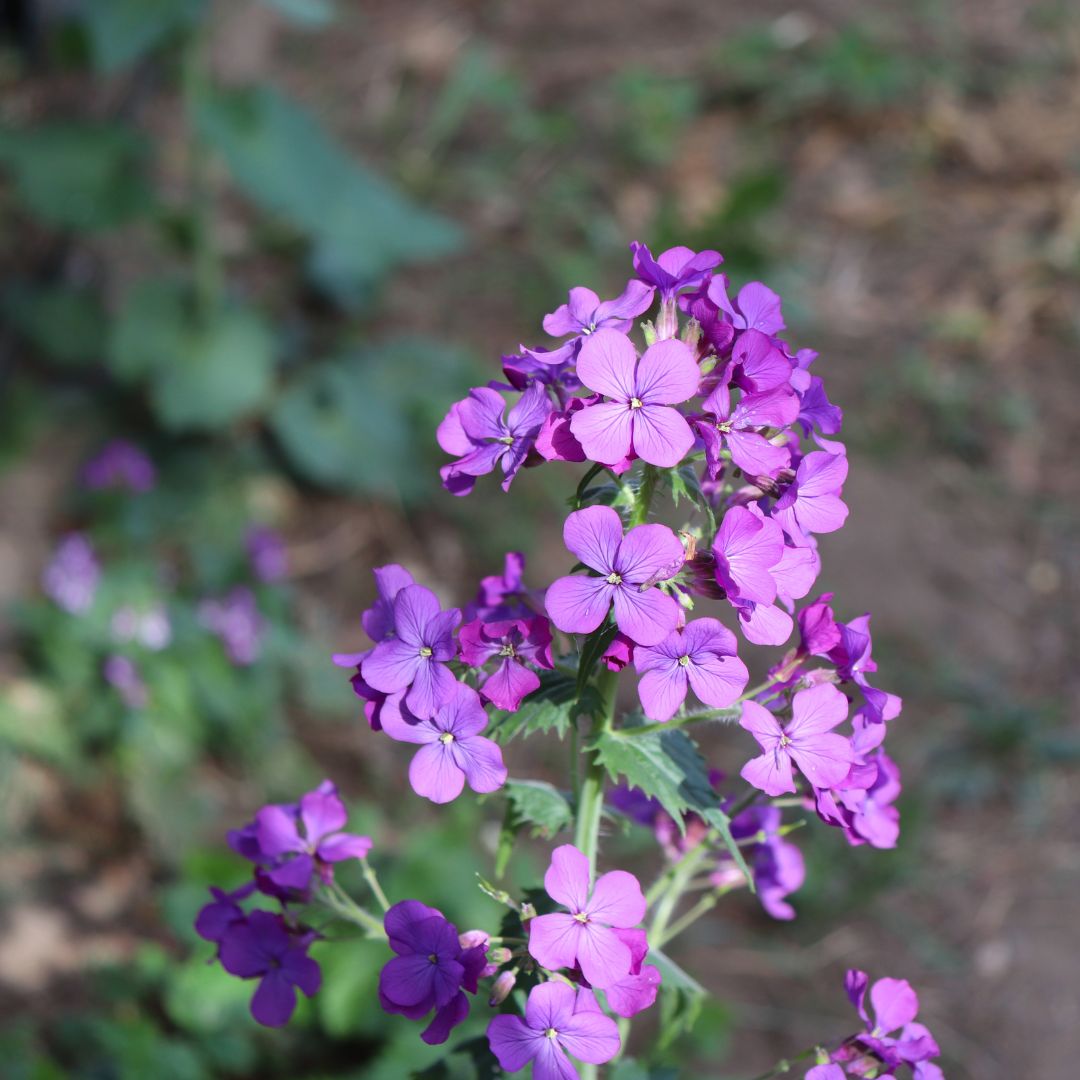
The list below includes some of the invasive plants posing the highest threat to Michigan ecosystems, so you can begin to identify any in your garden and take steps to remove them. Each description also suggests beautiful native alternatives to grow instead.
Here’s a list of favorite Michigan native plants.
High-Threat Invasive Plants in Michigan
If you recognize any of the following invasive plants in your garden, contact your local Extension Office or consult a reputable source for information on how to remove them properly. Many invasive plants will re-sprout and continue to spread if treated improperly.
1. Baby’s breath (Gypsophila paniculata)
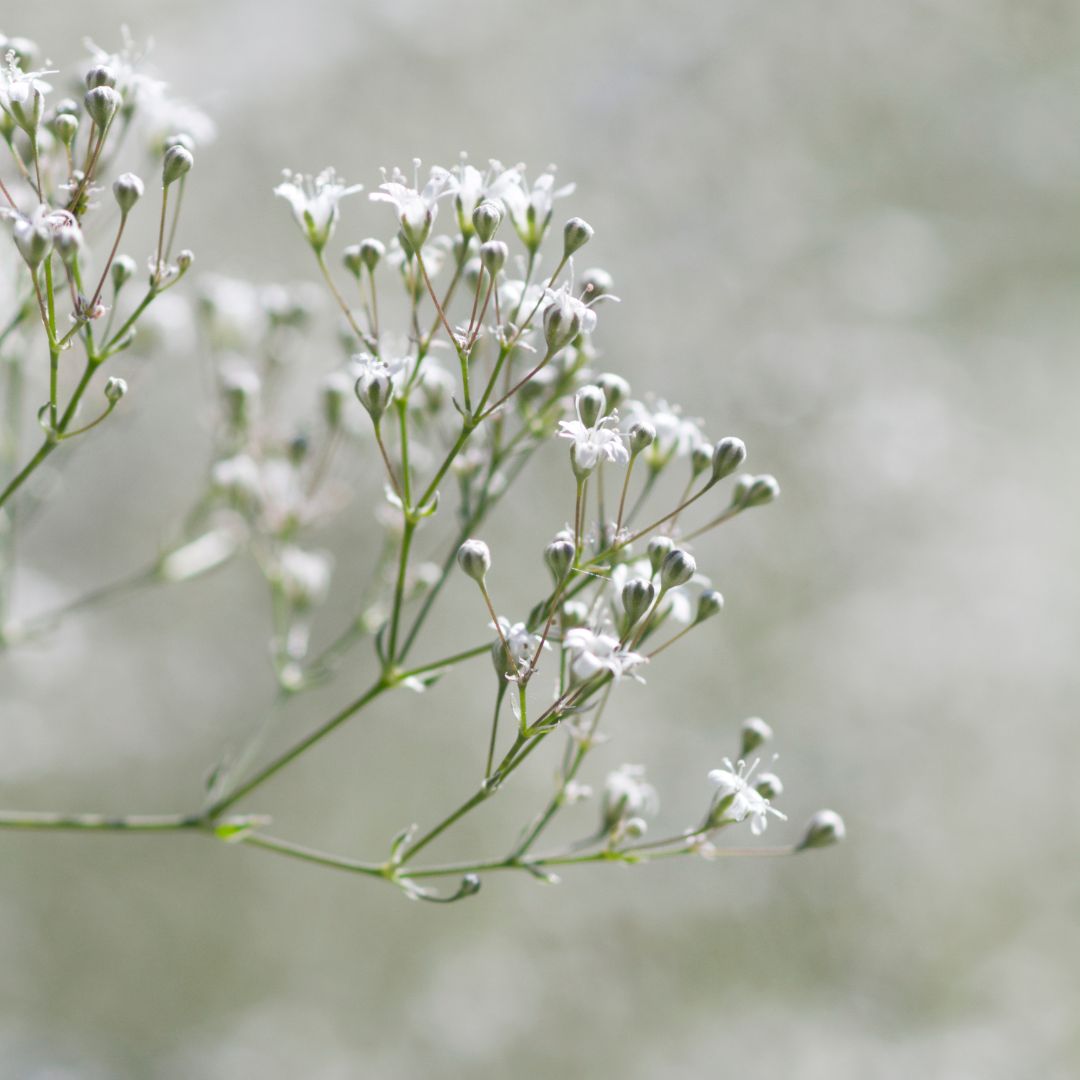
A popular addition to flower arrangements, baby’s breath is easily recognizable by its delicate white flowers. This large, mounded plant grows rapidly, spreading via the thousands of seeds produced by the plant. Its long taproot plunges up to 12 feet into the soil.
Plant the similar but native flowering spurge (Euphorbia corollata) or yarrow (Achillea millefolium).
2. Blue lyme grass (Leymus arenarius)
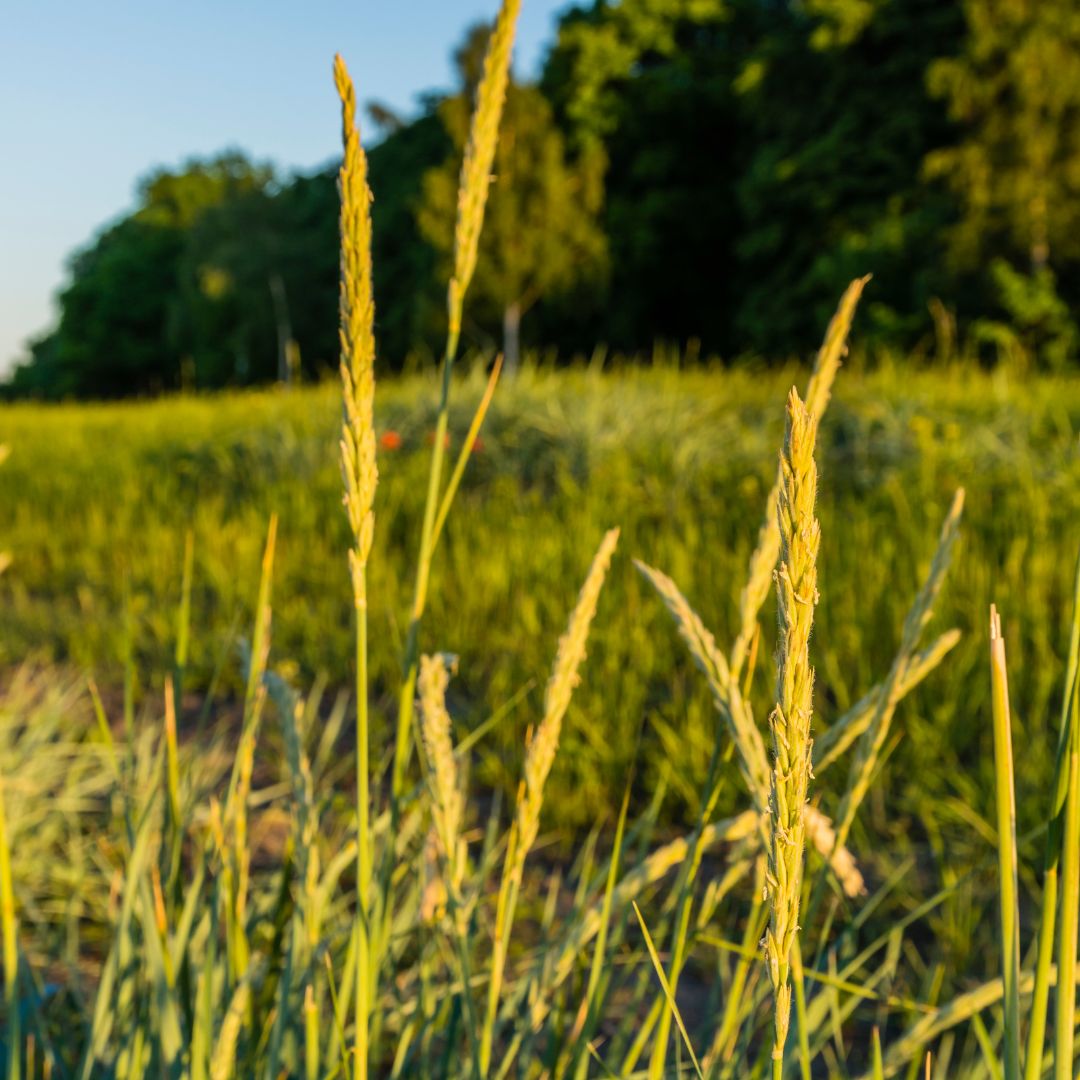
Often labled “blue dune grass,” blue lyme grass has hairless blue stems. It grows up to five feet tall but often flops over, and it spreads aggressively via creeping rhizomes and some seed dispersal. Typically, four to six spikelets are paired at the nodes of each flower spike. Very drought tolerant, blue lyme grass thrives in sunny, well-drained areas.
American dunegrass (Leymus mollis) is very similar but hairy under the spikes and greener, and thick-spike wheat grass (Agropyron dasystachyum) has a similar bluish hue but thinner spikes.
3. Bush honeysuckle (Lonicera spp.)
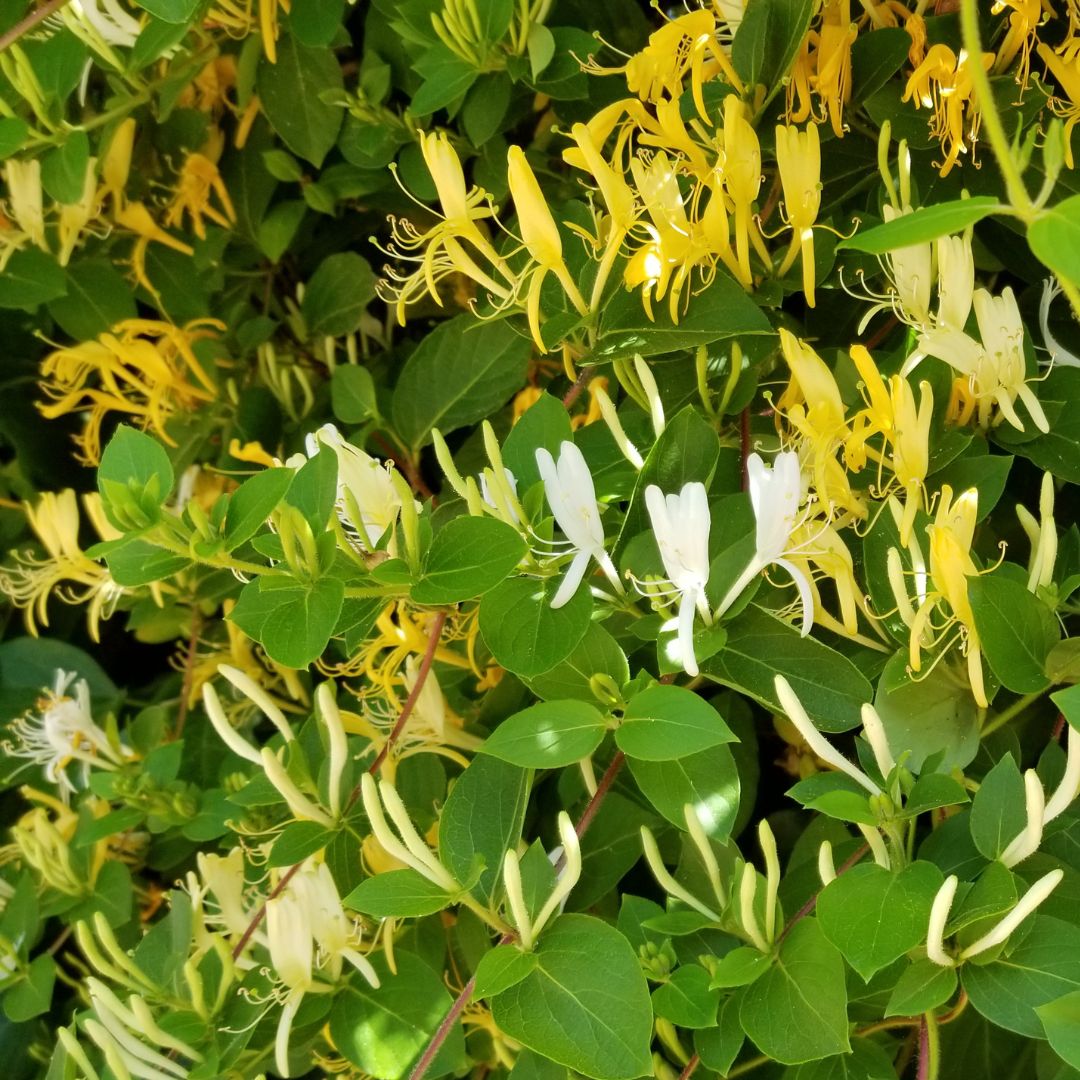
While there are some half dozen invasive bush honeysuckles in Michigan, they all share a similar appearance. These large, rapidly spreading shrubs grow up to 15 feet tall. Look for multiple arching stems covered in simple, opposite, elliptical leaves often with hairy undersides. The tubular, fragrant flowers bloom in late spring, followed by red, paired berries. Older branches tend to be hollow.
Plant native honeysuckles instead, such as Canada honeysuckle (L. canadensis) or American fly honeysuckle (L. involucrata).
4. Callery pear (Rhamnus cathartica)
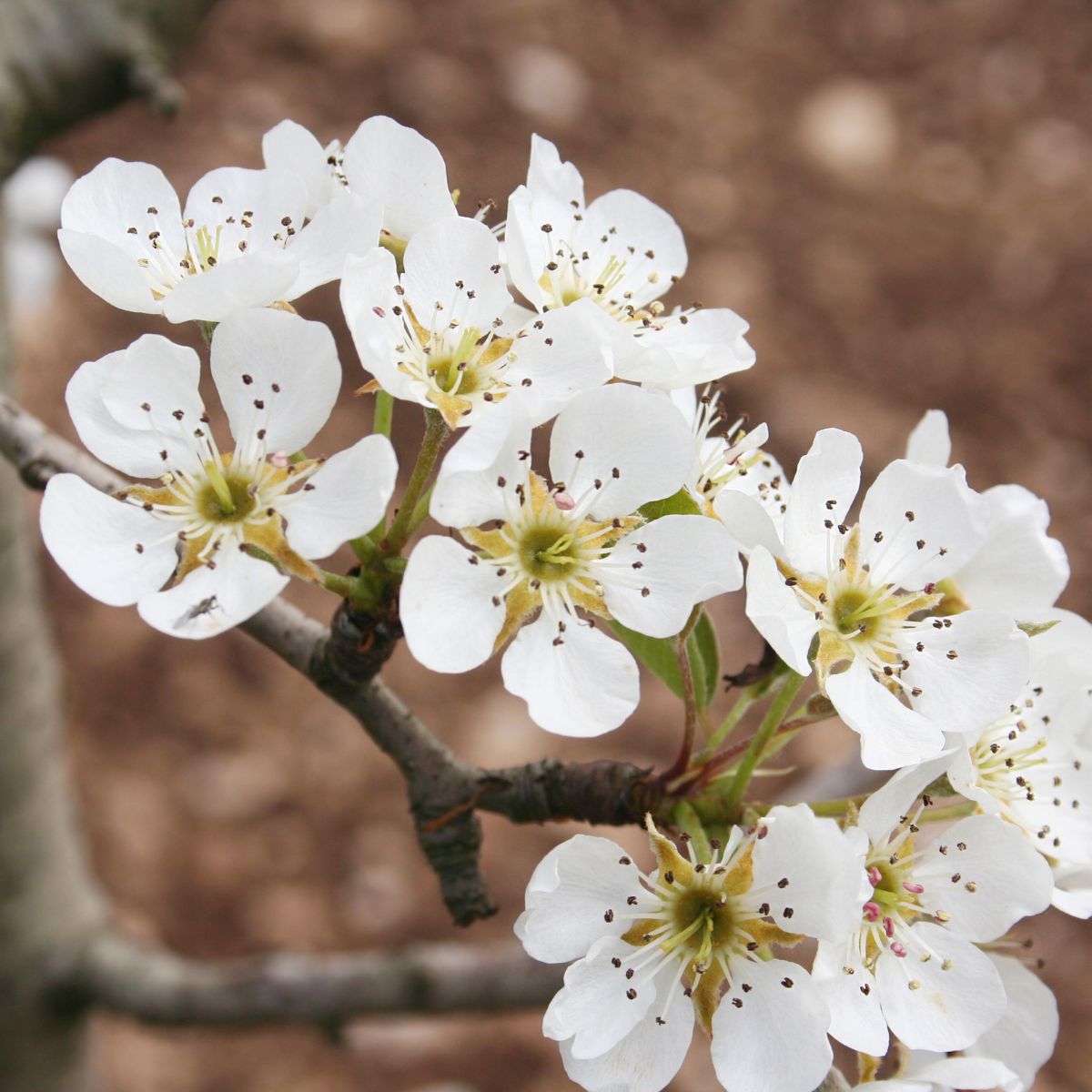
Also called bradford pear, callery pear is a medium tree that tends to grow in a pyramid shape. Its early white flowers smell unpleasant and small, brownish fruits appear soon after. The glossy, dark green leaves appear slightly wavy and have finely toothed margins.
Choose native trees, such as American elm (Ulmus americana) or a beautiful flowering dogwood (Cornus florida).
5. Common and glossy buckthorn (Rhamnus cathartica, R. frangula)
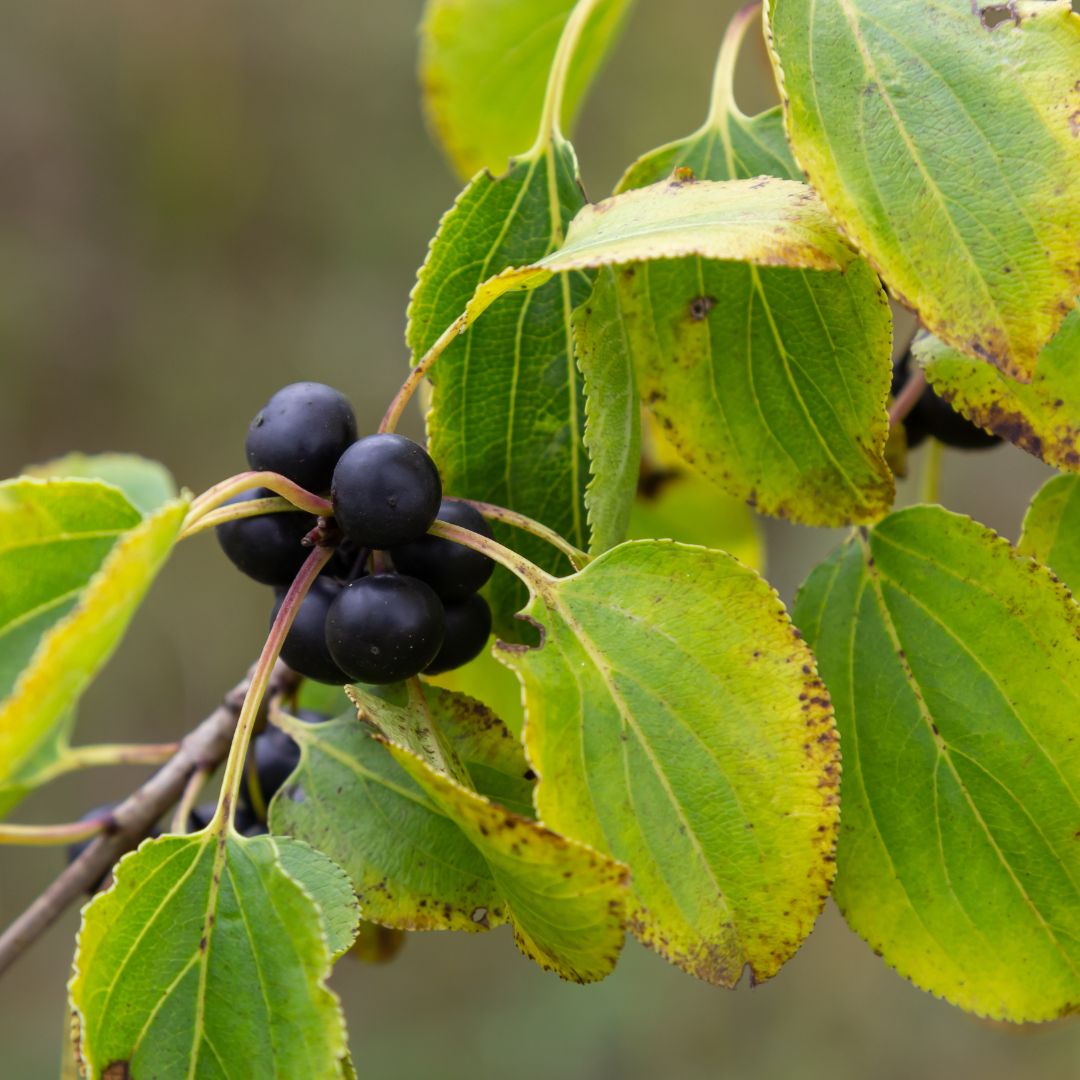
Small trees, common and glossy buckthorn, have oval leaves with veins that curve toward the leaf margins. Dark berries appear in the fall. While common buckthorn has orange inner bark and sharp spines, glossy buckthorn gets its name from its shiny foliage.
Similar native trees include dwarf alder (R. alnifolia), from the same genus and American hornbeam (Carpinus caroliniana).
6. Creeping Jenny (Lysimachia nummularia)
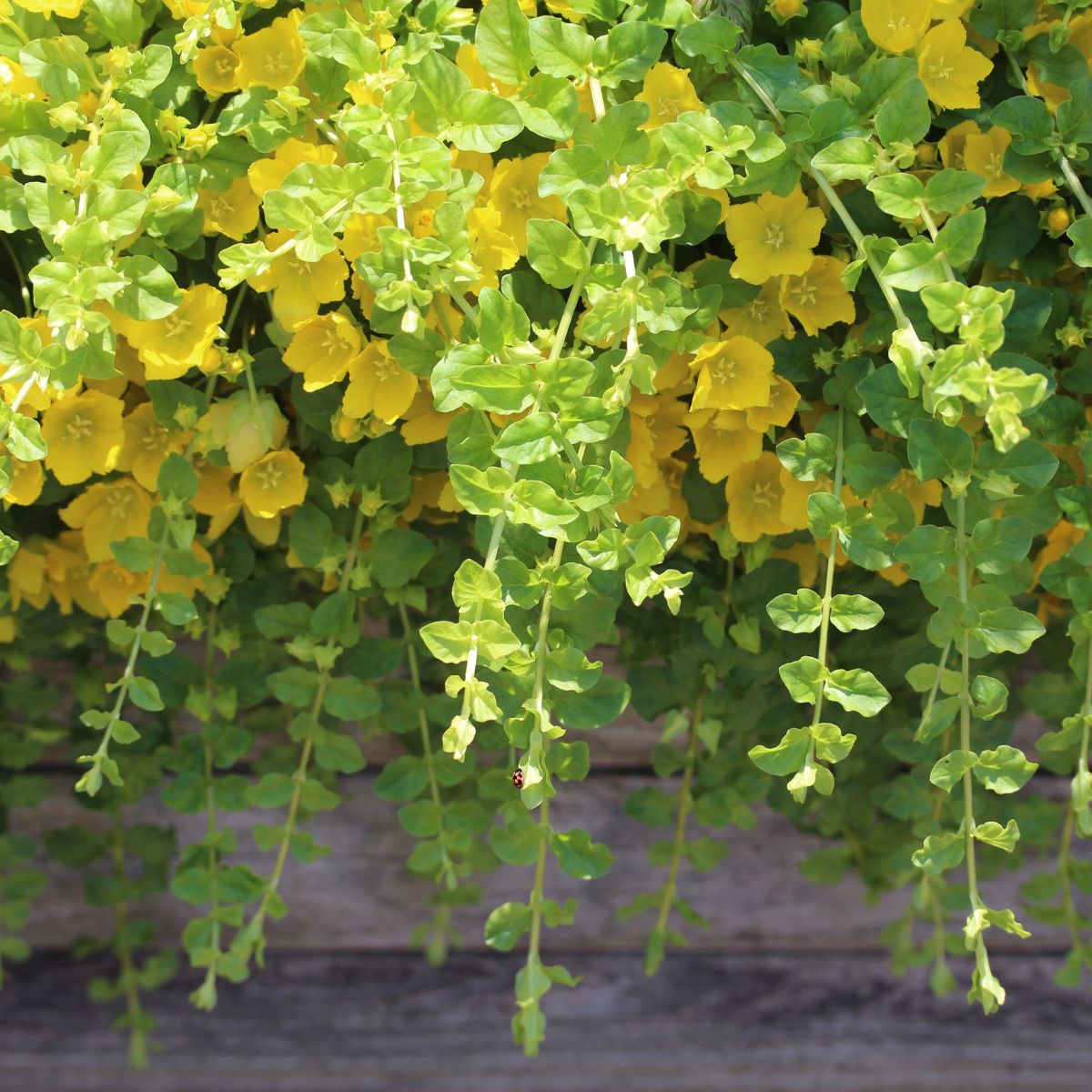
Commonly called moneywort, creeping Jenny grows in wet meadows, wetlands, and along the banks of water. This common addition to planters sprawls to form dense mats of vegetation with small, round, opposite leaves that resemble coins. Bright yellow flowers bloom in summer.
Replace with a native groundcover like wild ginger (Asarum canadense) or vine like virgin’s bower (Clematis virginiana).
7. Dame’s rocket (Hesperis matronalis)
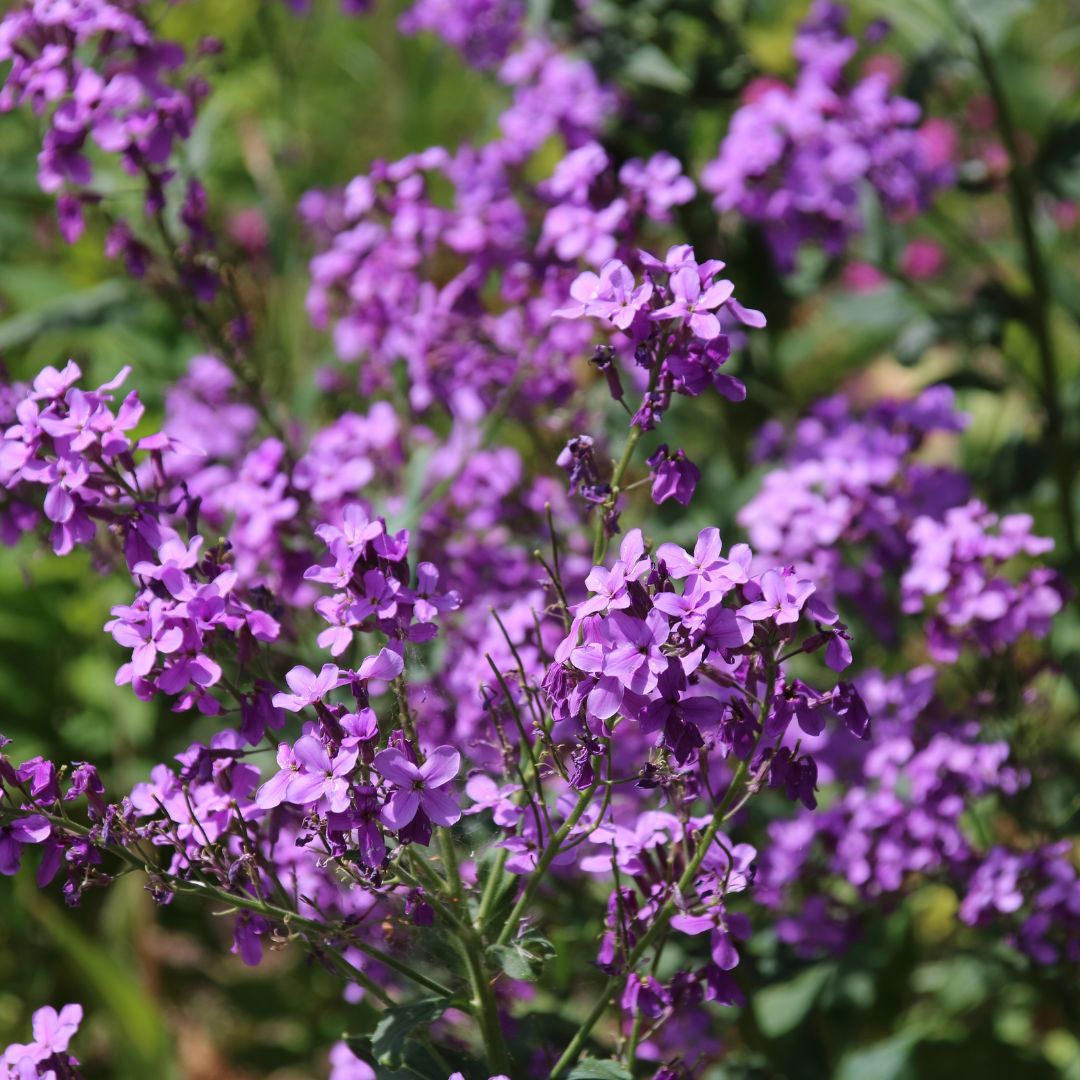
A biennial or short-lived perennial, dame’s rocket begins life as an evergreen basal rosette, then grows up to three feet tall in its second year. The downy, alternate leaves have a lanceolate shape and serrated margins, and they become smaller farther up the hairy stems. From mid-May through July, look for terminal clusters of white to purple flowers with four petals and a clove-like scent.
Native phlox (Phlox divaricata) has a very similar appearance. Another lovely alternative, swamp milkweed (Asclepias incarnata), has the added benefit of attracting monarchs and other butterflies.
8. Japanese barberry (Berberis thunbergii)
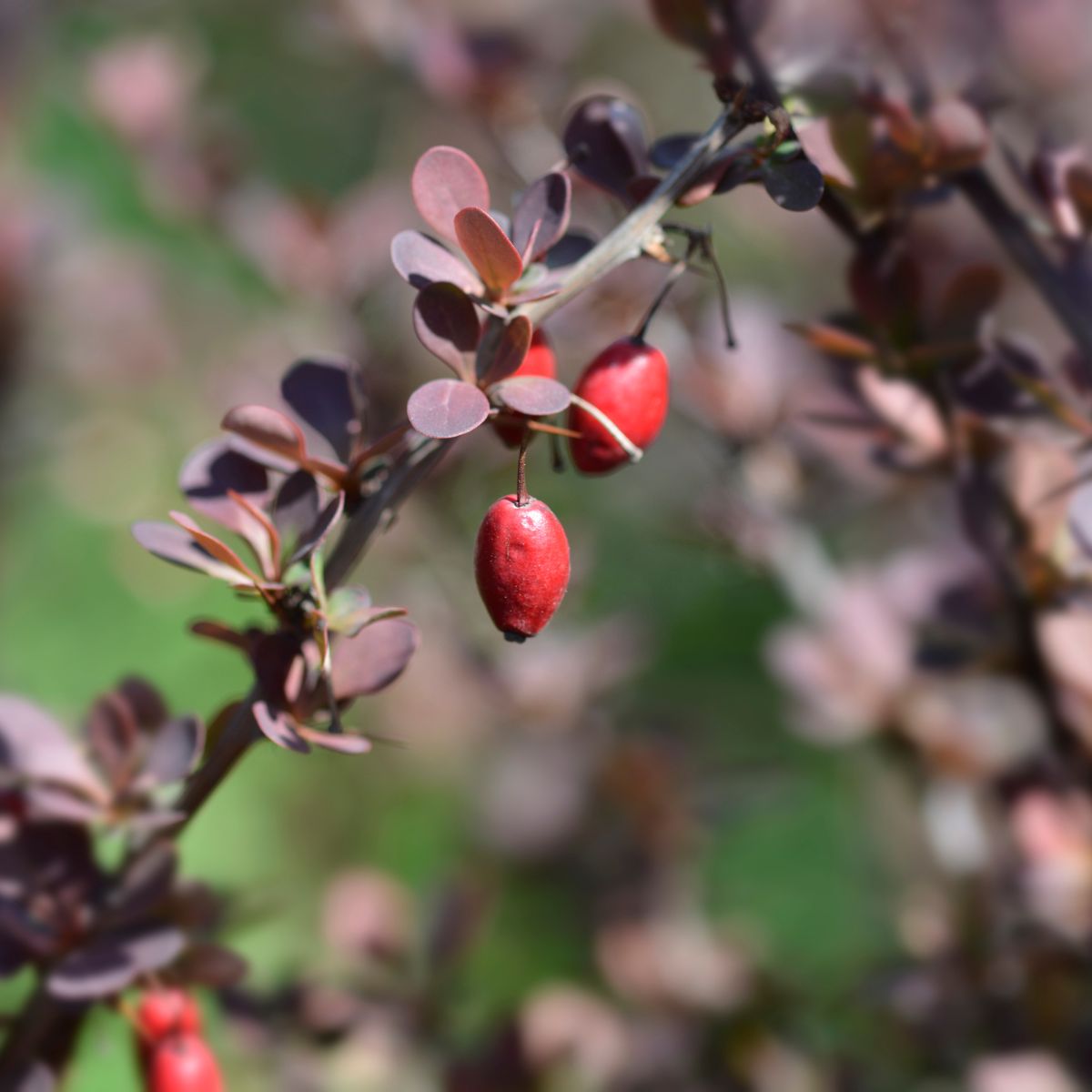
Japanese barberry is a small deciduous shrub that grows to just two or three feet tall. Its spiny, curving stems root wherever they touch the ground, and the small, spoon-shaped leaves grow in clusters at each node. Tiny, yellow flowers dangle from the branches in spring. In midsummer, bright red, oval berries mature and persist into winter, and the foliage turns red or purple in fall.
Alternative native shrubs include winterberry holly (Ilex verticillata) and large fothergilla (Fothergilla major).
9. Japanese honeysuckle (Lonicera japonica)
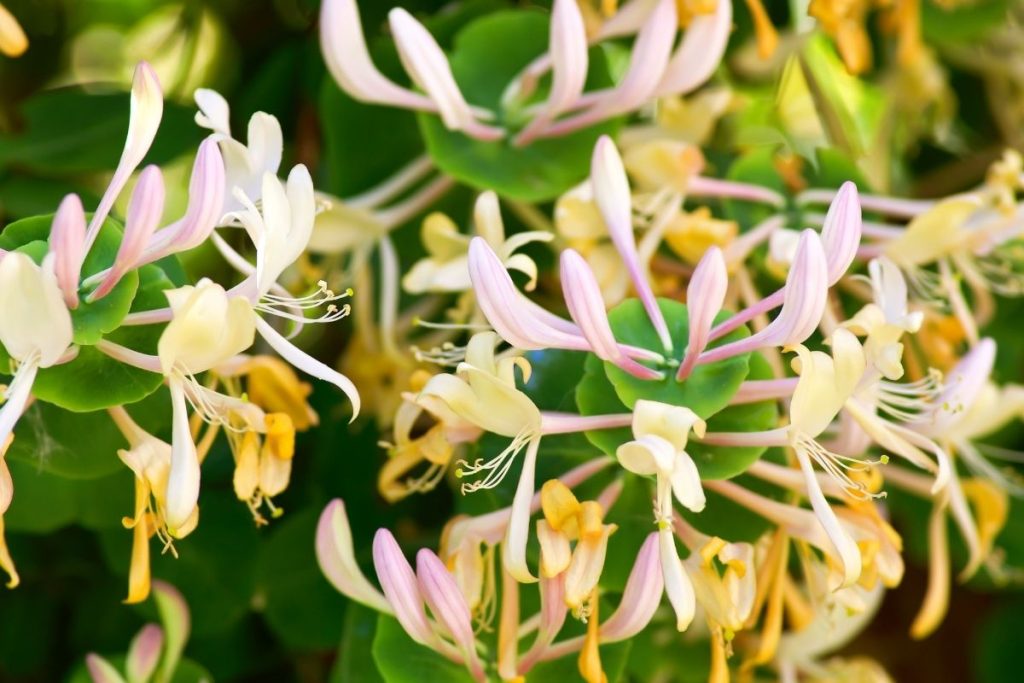
A perennial, semi-evergreen vine, Japanese honeysuckle can grow up to 23 feet long, covering shrubs, trees, other plants, and fences. The hairy, reddish to light brown stems are hollow and covered in small, opposite, oval leaves. The pale, fragrant, tubular flowers bloom in pairs from April to June, followed by purple to black berries.
Plant a native honeysuckle vine instead, such as yellow honeysuckle (L. flava) or hairy honeysuckle (L. hirsuta).
10. Oriental bittersweet (Celastrus orbiculatus)
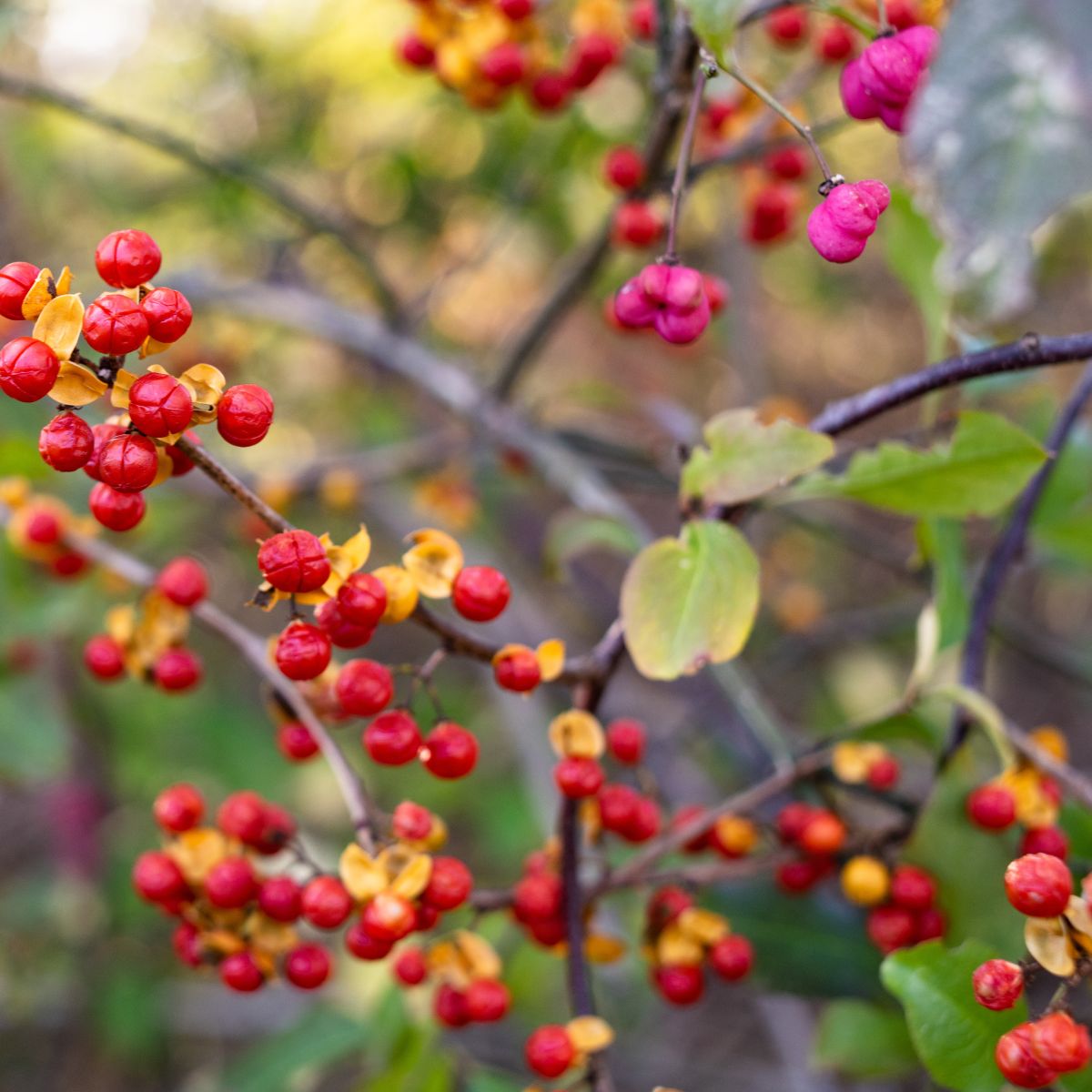
Oriental bittersweet is a woody deciduous vine that climbs up to 60 feet high. The light brown stems often have noticeable lenticels, and the glossy, rounded leaves have finely serrated margins. The green fruits ripen to yellow-orange in fall, with bright red arils inside.
Replace with American bittersweet (Celastrus scandens) or another native vine, like Blue Ridge carrionflower (Smilax lasioneura).
11. Reed canary grass (Phalaris arundinacea)
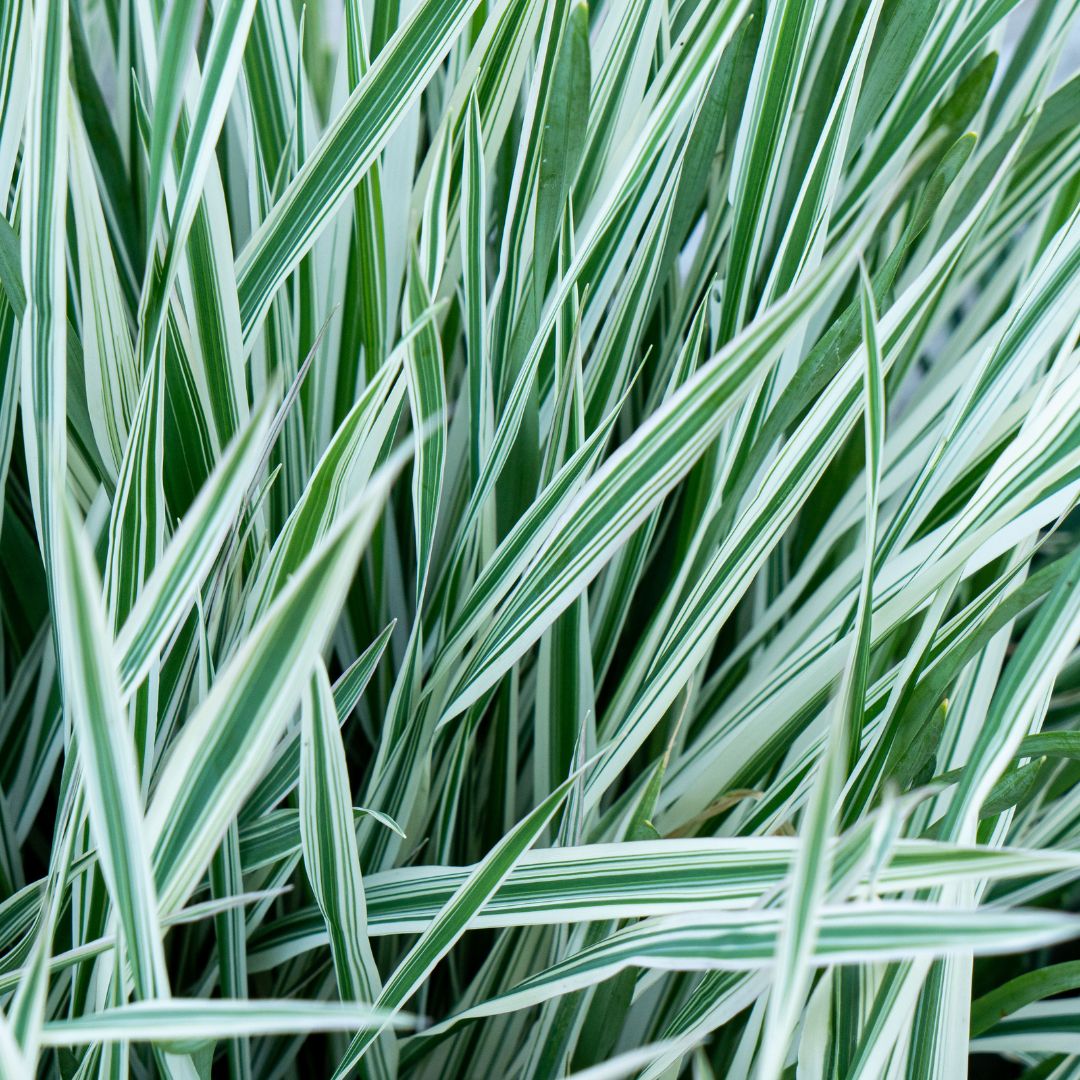
A cool-season perennial grass, reed canary grass forms dense stands up to eight feet tall, with a thick mat of fibrous rhizomes underneath. The flat, rough leaf blades grow from blue-green stems. Dense, spikelike flower clusters expand with maturity to reveal branching and disperse small, shiny brown seeds.
Native grasses to grow instead include blue joint grass (Calamagrostis canadensis) and prairie cordgrass (Spartina pectinata).
12. Water hyacinth (Eichhornia crassipes)
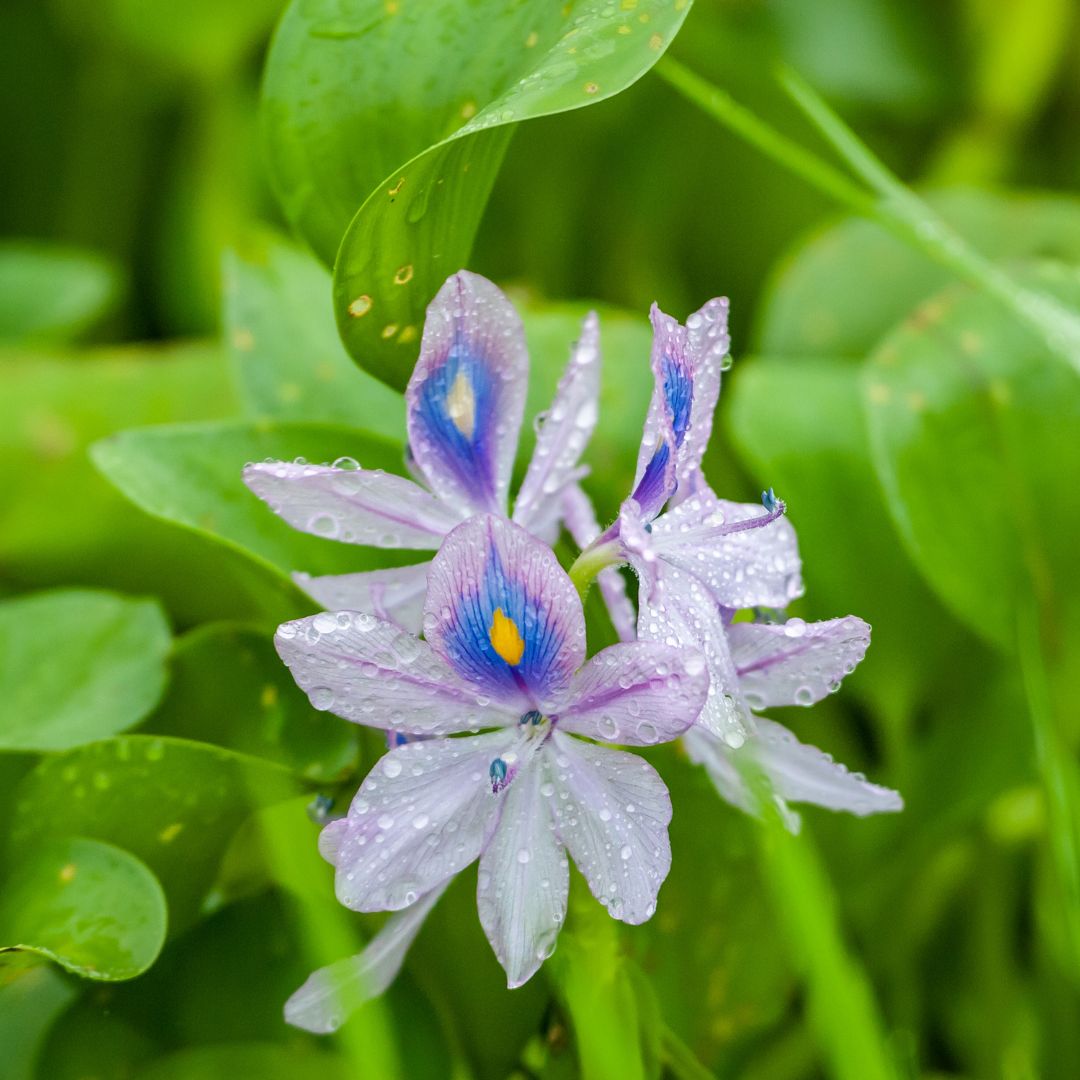
Water hyacinth is a floating aquatic plant with large, cupped, waxy leaves kept afloat by distinctive air bladders at the base of spongy stems. Its showy purple flowers bloom in clusters of eight to 15 on a single spike in midsummer. The plants grow up to three feet tall and form dense mats.
Plant native aquatic plants instead, such as common arrowhead (Saururus cernuus) or northern water plantain (Alisma triviale).
Don’t leave the cleaning up of invasive plants to park rangers; take steps to nurture native ecosystems in your backyard! For every invasive plant in Michigan, numerous other native species deserve a place in your garden.
